Discover the Majestic Wonders of Nature Through 20 Lesser-Known Marvels Around the World.
Mysterious Wonders of the World
- 1. Black Sand Beach in Iceland
- 2. Lake Natron
- 3. Antelope Canyon
- 4. Na Pali Coast
- 5. Belize Blue Hole
- 6. Yellowstone National Park
- 7. Ha Long Bay
- 8. Pamukkale
- 9. Iguazu Falls
- 10. Salar De Uyuni
- 11. Cano Cristales River, Colombia
- 12. Chocolate Hills in the Philippines
- 13. Mount Zao, Japan
- 14. Waitomo Glowworm Caves, New Zealand
- 15. Lake Baikal, Russia
- 16. Zhangye Danxia National Geopark, China
- 17. Lake Hillier, Australia
- 18. Spotted Lake, Canada
- 19. Eternal Flame Falls, USA
- 20. Danakil Depression, Ethiopia
In addition to famous wonders like the Great Wall of China or the Taj Mahal in India, the following locations are equally impressive and unique, yet lesser-known.
1. Black Sand Beach in Iceland
The black sand beaches in Iceland resemble a surreal scene from a fantasy movie. They are known for their distinctly dark sand, which originates from the region’s volcanic mountains.
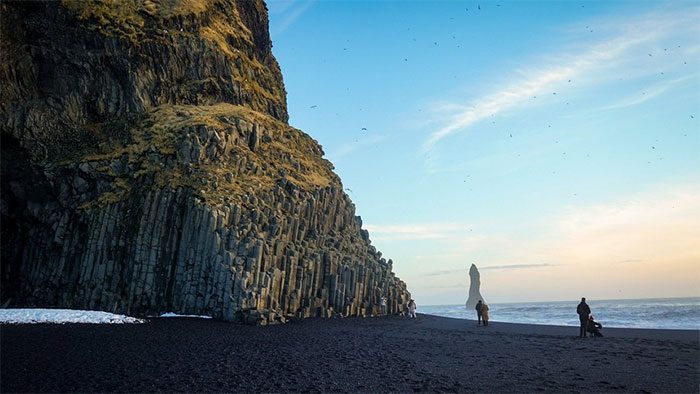
Black Sand Beach in Iceland. (Photo: Tripadvisor).
When molten lava comes into contact with water, it cools and solidifies, breaking into smaller pieces. Over time, these fragments erode and break down into even smaller particles, ultimately forming black sand.
2. Lake Natron
Lake Natron is a unique saline lake located in northern Tanzania, near the border with Kenya. It is one of the most wonderful yet lesser-known natural wonders, known for its striking red color.
This red hue is formed by high concentrations of minerals and salts, particularly sodium carbonate and other alkaline salts. These salts are brought into the lake by hot springs and mineral-rich groundwater from the surrounding volcanic areas.
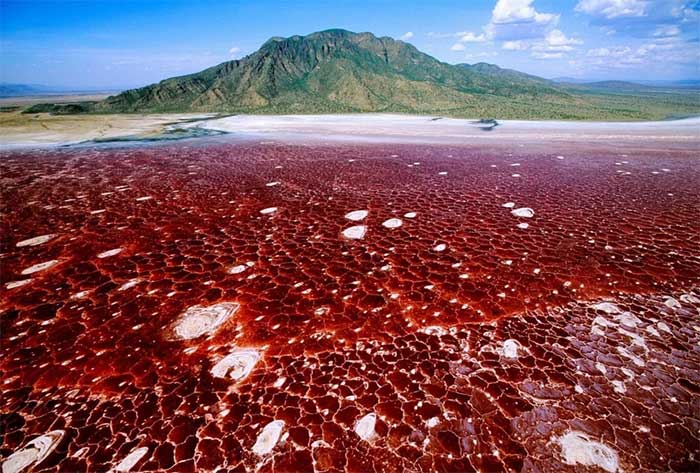
Lake Natron in northern Tanzania. (Photo: Tanzania Horizon).
The lake’s high alkalinity and salinity create a harsh environment for most living organisms. However, Lake Natron is home to a type of halophilic microorganisms and algae, including cyanobacteria. These organisms thrive in extreme conditions, giving the water a bright red or pink hue.
3. Antelope Canyon
This canyon is located in the southwestern United States, within the Navajo National Monument near Page, Arizona. What makes this canyon remarkable are its intricate geological formations and stunning colors.
The canyon features narrow, winding passageways that have been eroded by wind and water over time. The walls here are smooth and curved, with beautiful patterns etched into the rock.
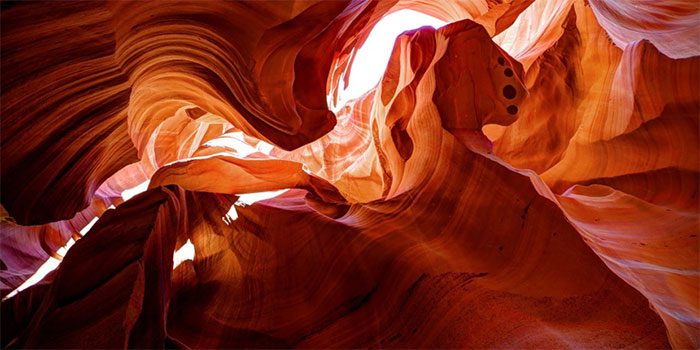
Antelope Canyon in the southwestern United States. (Photo: Visit Arizona).
Visitors need to book guided tours to explore the canyon, where they can delve deeper and enjoy a spectacular display of colors ranging from vibrant reds and oranges to serene blues and purples. The contrast between light and shadow highlights the smooth, curved shapes of the canyon walls.
4. Na Pali Coast
Na Pali is one of the most photographed locations in Hawaii. The rugged green cliffs rise dramatically around shimmering turquoise waters, creating an unforgettable scene.
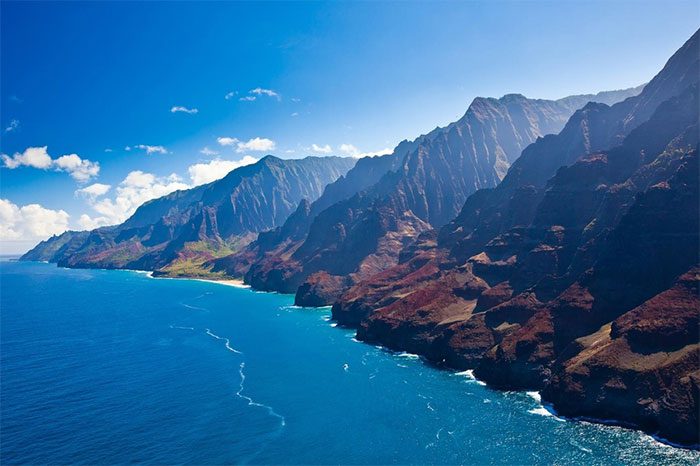
Na Pali Coast in Hawaii. (Photo: Go Hawaii).
Most visitors will find the scenery quite familiar as it has appeared in many famous films, such as Jurassic Park. While it can be explored by sea, travelers should book an aerial tour to fully appreciate the grandeur of Na Pali Coast.
5. Belize Blue Hole
The Belize Blue Hole is a famous natural wonder located offshore from Belize in Central America. As one of the largest and deepest underwater sinkholes in the world, it has a diameter of over 300 meters and a depth exceeding 120 meters.
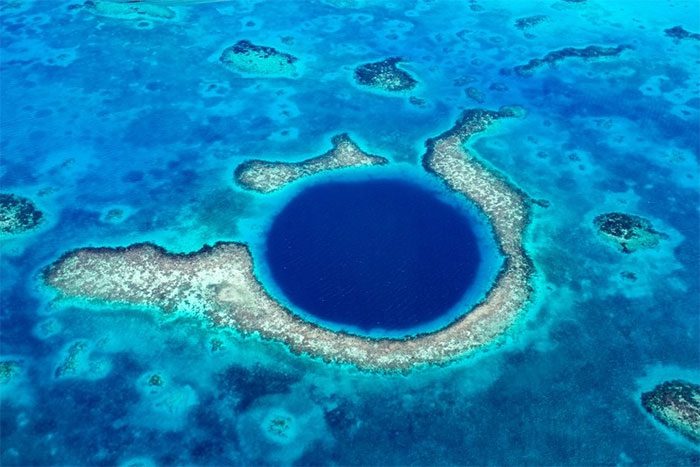
Belize Blue Hole in Central America. (Photo: Geographical Magazine).
From the air, it forms a circular shape surrounded by turquoise water, creating a mesmerizing contrast. This deep blue color is due to the depth and clarity of the water. The Blue Hole was formed over 10,000 years ago, following a series of events during the Ice Age when sea levels were significantly lower than they are today.
6. Yellowstone National Park
Established in 1872, Yellowstone is the oldest national park not only in the United States but globally. In its early years, stories of its brilliance faced skepticism due to the area’s geothermal activity being considered abnormal.
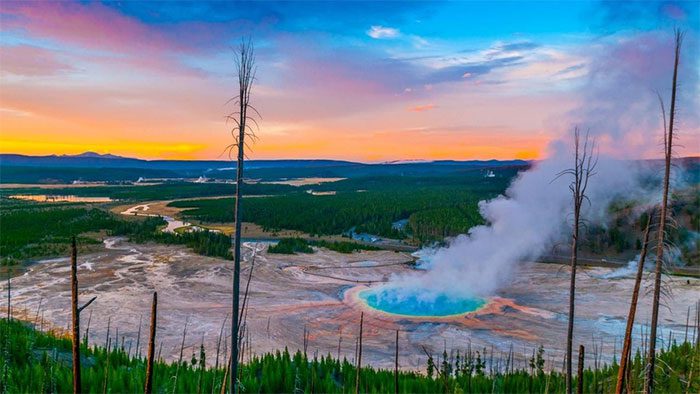
Yellowstone National Park in the United States. (Photo: Visit The USA).
The common geothermal activities here include geysers, hot springs, mud pots, and fumaroles. The park is home to the famous Old Faithful geyser, which erupts water over 50 meters high into the air on a regular schedule.
7. Ha Long Bay
Ha Long Bay is one of the most visited destinations in Vietnam. Listed as a UNESCO World Heritage Site, Ha Long Bay is a natural wonder that should not be missed.
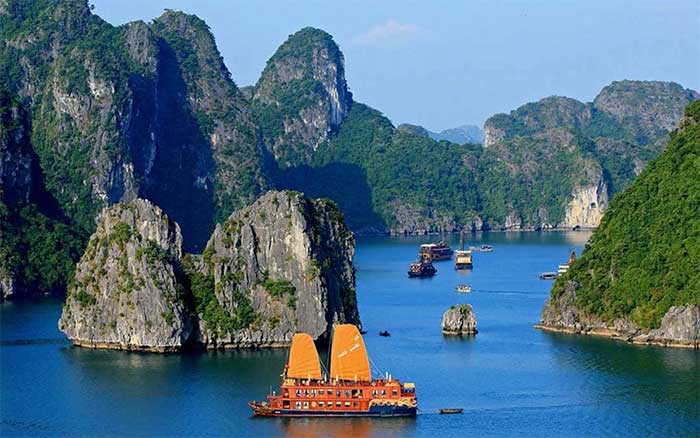
Ha Long Bay in Vietnam. (Photo: Viettravelland).
The bay is home to over 1,600 limestone islands and islets, creating a stunning maritime landscape. The emerald waters of Ha Long Bay are perfect for boat cruises. The best time to visit the bay is from October to April when the weather is quite cool during this period.
8. Pamukkale
Pamukkale in Turkish means “Cotton Castle,” hailed as the 8th natural wonder of the world and recognized by UNESCO as a World Heritage Site in 1988. Pamukkale is located in Denizli, southwestern Turkey, about 650 km from Istanbul.
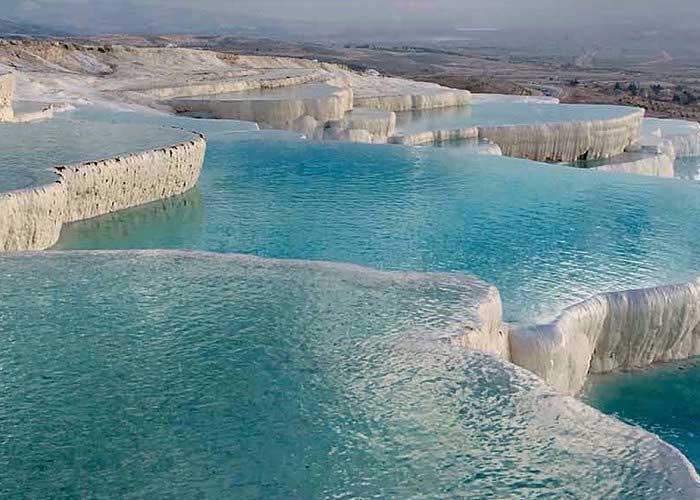
Pamukkale Cotton Castle in southwestern Turkey. (Photo: Tripadvisor).
From a distance, Pamukkale looks fluffy like a snow-capped mountain. Over the years, layers of natural sediment from mineral-rich hot springs flowing over the rock edges have created a series of pristine white travertine terraces stacked like steps.
Visitors to Pamukkale have the opportunity to walk barefoot on the terraces, enjoying the sensation of warm mineral-rich water flowing around their feet. The terraces are not only visually stunning but also known for their healing properties.
9. Iguazu Falls
Iguazu Falls is a magnificent natural wonder located on the border between Argentina and Brazil. Composed of over 275 individual waterfalls, Iguazu is the largest waterfall system in the world. This location is surrounded by lush rainforests, and the sound of cascading water echoes like thunder.
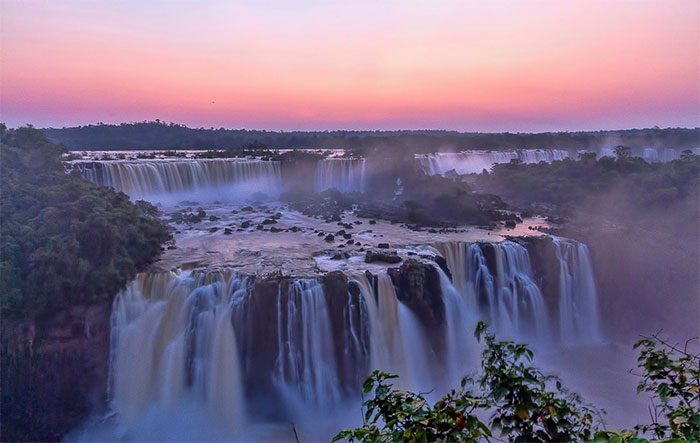
Iguazu Falls is located on the border between Argentina and Brazil. (Photo: CNN).
One of the most ideal attractions at Iguazu Falls is the Devil’s Throat, a U-shaped waterfall that rises over 80 meters high. It is formed by a large, crescent-shaped cliff protruding from the surrounding landscape, with water cascading over the edge into the deep abyss below.
10. Salar De Uyuni
Salar de Uyuni, also known as the Uyuni Salt Flat, is a unique natural wonder located in southwestern Bolivia. It is the largest salt flat in the world, covering an area of over 10,000 square kilometers, at an elevation of approximately 3,650 meters above sea level.
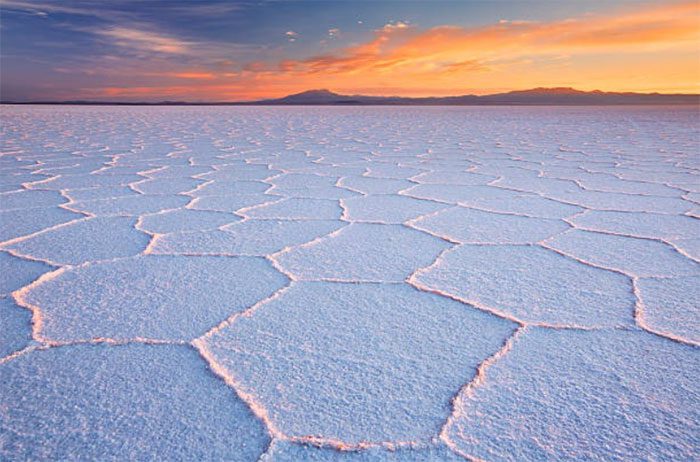
The Salar De Uyuni salt flat in southwestern Bolivia. (Photo: Pexels).
The Uyuni Salt Flat is a vast expanse that creates a surreal and striking landscape. It was formed by the evaporation of ancient lakes, leaving behind a thick layer of salt and minerals.
The texture of the salt flat changes as visitors move across it; some areas are smooth and flat while others are cracked and rugged, giving travelers the sensation of being in another world. The scenery becomes even more beautiful during the rainy season when water on the salt flat reflects the sky, creating a surreal landscape.
11. Cano Cristales River, Colombia

Commonly referred to as the “River of Five Colors” or “Liquid Rainbow,” the vibrant yellow, green, blue, black, and red colors of the Cano Cristales River are created by the vegetation that grows on the riverbed. Locals believe that the river flows from the “Garden of Eden.” Many travelers regard it as one of the most beautiful rivers on Earth.
12. Chocolate Hills, Philippines
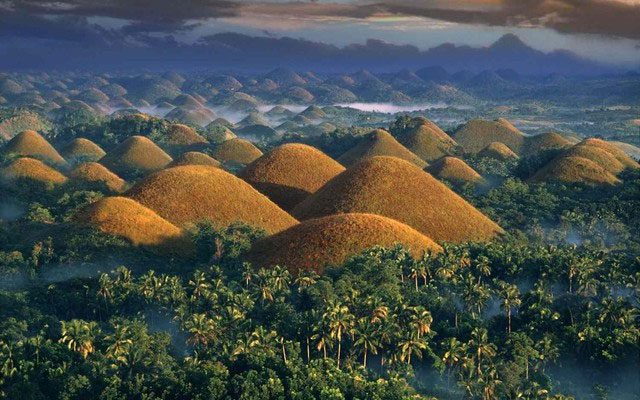
According to legend, the Chocolate Hills in Bohol, Philippines, are the tears of a giant named Alogo, who cried in sorrow after losing his beloved. These tears formed the scattered hills. Some say the hills resemble Hershey’s Chocolate Kisses – a type of chocolate candy. This is where the name Chocolate Hills originates.
13. Mount Zao, Japan

Mount Zao is one of the most famous mountains in Japan, renowned for its “snow monsters.” These peculiar shapes appear in the middle of winter, formed after ice accumulates on trees and is then covered by snow. The entire forest of these strange figures is enough to send shivers down anyone’s spine.
14. Waitomo Glowworm Caves, New Zealand

Visitors to the Waitomo Glowworm Caves are captivated by thousands of glowing fireflies. They emit a blue light mixed with a hint of green. Local tour companies often organize tours for glowworm viewing by boat.
15. Lake Baikal, Russia
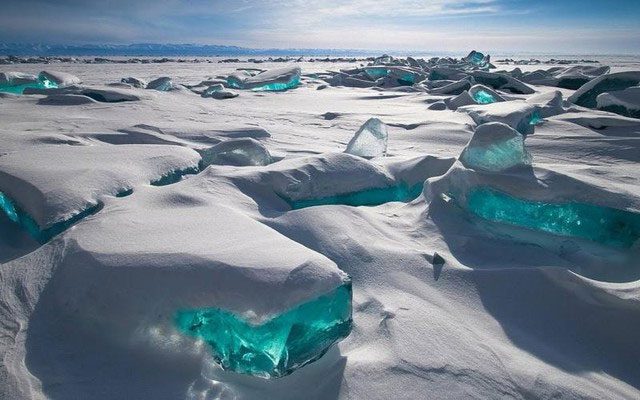
This is the largest freshwater lake in the world and particularly enchanting in winter. The ice season usually begins in mid-January and lasts until mid-April, offering visitors stunning views of the translucent turquoise ice sparkling under the Siberian sun.
16. Zhangye National Geopark, China
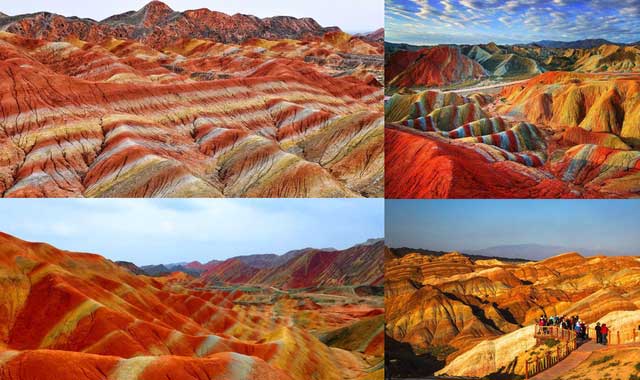
The landscape of Zhangye National Geopark is sometimes soft and sometimes sharp, featuring hues of coffee, ginger, and cinnamon. It resembles a 24-million-year-old cake with a unique and captivating beauty.
17. Lake Hillier, Australia
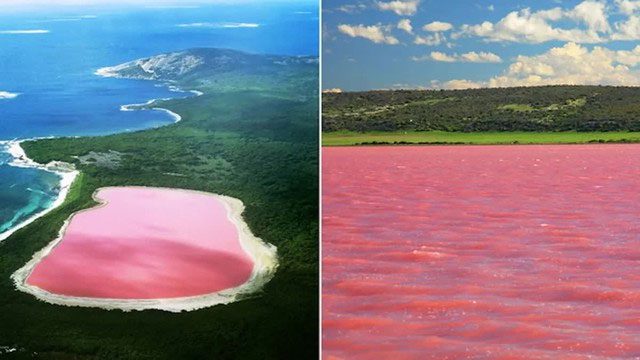
Located at the edge of Middle Island off the coast of Western Australia, Lake Hillier is the most famous salt lake in the world with its bubblegum pink color. This color does not change even when water from the lake is placed in a container. Experts believe this color is due to a microorganism called Dunaliella salina in the lake water, which is a green bacterium. Analyses also reveal the presence of various other bacteria in the lake water. Despite its high salt content, Lake Hillier is still safe for swimming. However, this activity is prohibited to preserve the rare microorganisms in the lake, and the best way to enjoy the lake is from the air.
18. Spotted Lake, Canada
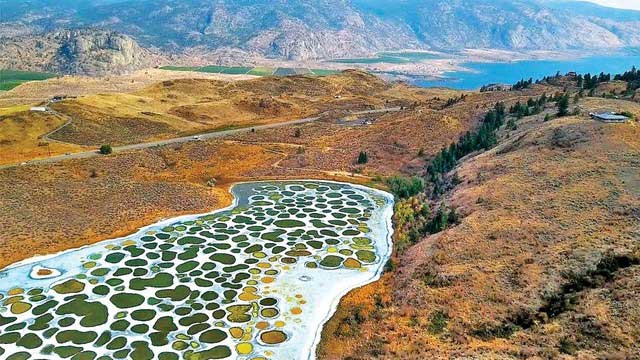
Located in the eastern part of Similkameen Valley, this lake is named after the many minerals that accumulate on its surface. Visitors compare the lake to the long neck of a giraffe. In fact, after analysis, scientists have discovered that the salinity of the lake combined with its mineral composition may allow the water in the lake to heal various ailments. The Okanagan tribe of the First Nations has long believed that this lake has the power to heal many wounds and diseases. According to The Earth Chronicles of Life, an ancient story from the tribe tells that the lake could prevent an ancient war between tribes by healing the warriors’ wounds so quickly that they decided fighting was futile.
19. Eternal Flame Falls, USA
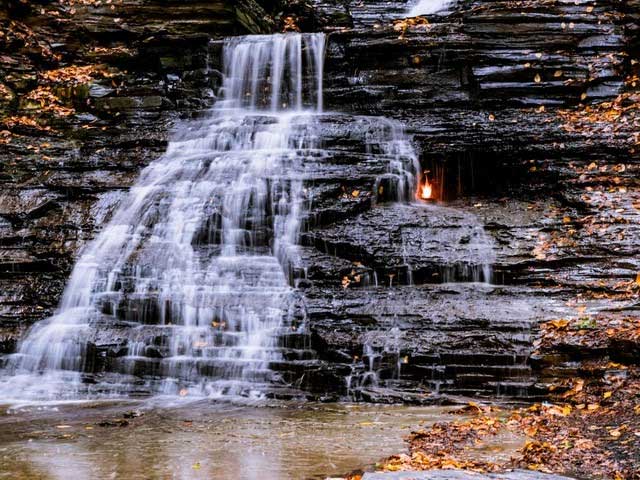
This waterfall is located in Chestnut Ridge Park, New York. Behind the water is a flickering flame that is almost year-round. Natural gas is released from a small cave at the foot of the falls, and the falls are deliberately ignited to create this amazing and enchanting phenomenon.
20. Danakil Depression, Ethiopia
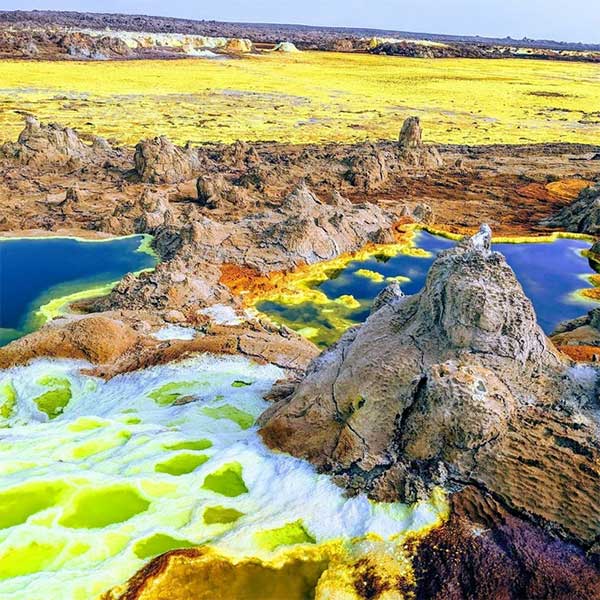
The Danakil Depression in Ethiopia is located 124 meters below sea level, making it one of the lowest places on Earth. At the same time, it is also one of the hottest places on Earth, with winter temperatures consistently above 40 degrees Celsius and extremely scarce rainfall. However, mercury temperatures can sometimes reach 50°C. This hot spring contains a lot of sulfur, bubbling lava, and thick salt formations waiting to be explored by adventurers. From the Pleistocene epoch to 30,000 years ago, the Red Sea periodically flooded the Danakil Depression, then evaporated, leaving a thick layer of salt and sediment on the surface. Beneath the salt layer is the magma reservoir of the Dallol volcano, which allows freshwater to seep in from the surrounding highlands filled with minerals and acid gases. Barbara Cavalazzi, a geologist at the University of Bologna, Italy, explains: “The interaction between water, magma, and salt fossils is the source of all the extreme chemical and physical parameters in this region.” However, the temperature, salinity, and acidity conditions here reach lethal thresholds for most organisms that exist elsewhere on Earth, and life can persist in this extremely harsh environment.




















































